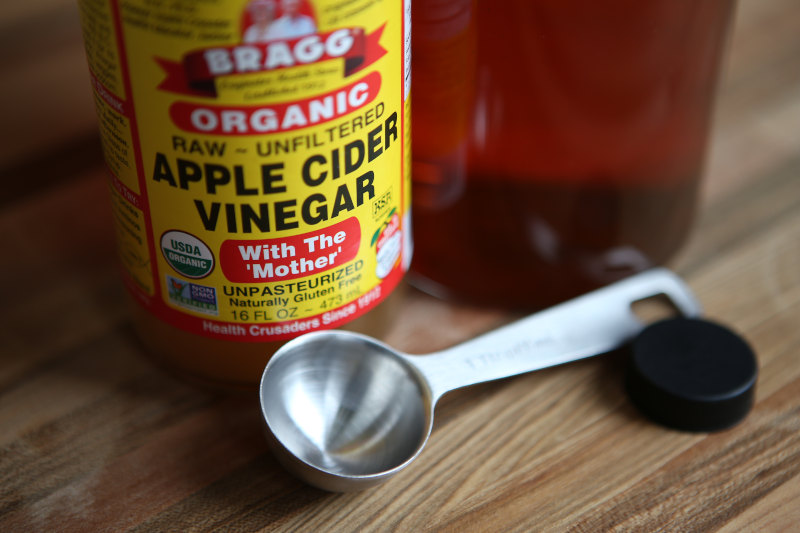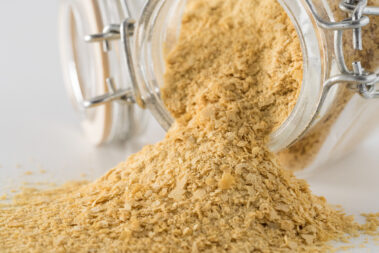Vinegar is one of the most versatile products in our kitchens. It can be used for a variety of culinary applications from making dressings and sauces to tenderizing tough meats and creating tasty marinades. It is also an important staple for green cleaning around the house and can even be used to kill weeds.
With all those uses, it is a great idea to always have a few bottles of vinegar in your pantry or cellar. But before you load up on this handy product, you need to understand how to store it so it will last and to know if it’s possible for vinegar to go bad.
Table of Contents
Does Vinegar Expire?
Whether you are buying distilled white vinegar, apple cider vinegar, or any of the many variations of this acidic staple, you will find an expiration date listed on the bottle. But it is important to understand that these listed dates are simply “best by” dates and don’t actually indicate when the product is no longer safe to use.
All vinegar is made by double fermenting fruits or grains. The first fermentation creates ethanol (alcohol). During the second round of fermentation, that alcohol is further broken down into acetic acid and other byproducts.
The very acidic nature of vinegar is the reason it does not need to be stored in the fridge. It is also the reason that vinegar will last for years even after being opened.
So how long is vinegar good after the expiration date? Surprisingly, the answer is indefinitely. In terms of how long vinegar can safely be used to cook and clean with, it truly will never go bad. But, the quality of vinegar, including the taste and acidity, does diminish over time.
Luckily, there are some steps you can take to store your vinegar so that it continues to taste delicious and hold it’s natural acidity well past the listed expiration date.
How to Store Vinegar for Longevity
In general, if you are stockpiling vinegar and don’t want it to lose the acidity that makes it an effective cleaner or the taste that makes it so valuable to cooking, you want to start by storing it in a cool dark place.
Reduce the amount of oxygen that contacts your vinegar by making sure the lid is securely tightened and by replacing the lid immediately after use.
While it is possible for oxygen to speed up the fermentation process, especially in certain kinds of vinegar (more on that in a minute), it’s actually the moisture in the air that is the most detrimental to increasing shelf life.
Water from the air settles into the vinegar and acts to dilute the acidity. So, over time, it’s actually possible for your 5% distilled white vinegar to become more basic.
Vinegar will also become naturally less stable over time which will lead to the acetic acid breaking down and the PH increasing. One thing you can do to help vinegar stabilize is to pasteurize it. To do this, you simply need to heat the vinegar to 155 degrees. This stops the fermenting process and helps sustain the product at its current acidity for a longer period.
A lot of the vinegar products you find in stores, especially distilled white and other types sold in large volumes, have already been pasteurized.
Storing Vinegar with the Mother
One type of vinegar that isn’t likely to be pasteurized and is, in fact, often sold with the “mother” or the fermenting bacterial colony intact, is apple cider vinegar.

Because this type of vinegar is still alive and contains beneficial probiotics, pasteurizing it would remove many of its health benefits.
Instead, you should help stabilize this type of vinegar by reducing oxygen exposure, which will slow the fermentation process. Once you open a bottle of vinegar with the mother, try to use the product up quickly to avoid having to deal with changes in flavor and consistency.
If left too long, an opened bottle of vinegar with the mother will continue fermenting while the colony of bacteria continues to grow. Eventually, it may even take over the entire bottle and leave you without any useable liquid.
In this situation, you could remove part of the colony, or SCOBY, and put it into a new bottle. By adding fresh alcoholic apple cider to each bottle you could then ferment new vinegar in much the same way you brew kombucha.
Signs that Your Vinegar Has Gone Bad
So how do you know if the vinegar you’ve been storing is still optimal for kitchen use or if it should be delegated to cleaning use only? Here are a few signs you should look for:
- Cloudy vinegar often means the product is past its prime. You can filter the product to remove some of the sediment and it is still safe to use but won’t taste as good as a fresher bottle.
- Balsamics, apple ciders, and other colorful vinegars are likely to lose some of their luster the older they get. This change in color likely indicates a change in taste as well.
- You can usually detect a reduction in acidity in vinegar by smelling it or tasting it. While even more basic vinegars can still make effective cleaners, especially when heated before use, they aren’t the best choice for cooking since that loss of acidity will affect the overall taste of the dish.
Uses for Expired Vinegar
If you do end up with a bottle of cloudy, dull, or less acidic vinegar, there is no need to throw it out. Even vinegar past its prime can still be used for cleaning, weed control, a fruit and veggie wash, as a fabric softener, and for egg dying!
However you intend to use your vinegar stockpile, storing the bottles in the right way can make a huge difference in the options available to you when you finally open them. Whether that be next month or a decade from now.
Feature photo: ©vasiliybudarin/Bigstock
- How to Pick the Perfect Watermelon For a Sweet Summer Treat - April 10, 2024
- Future Kind’s Foundations: A Multivitamin Made for Vegans - December 5, 2023
- Does Nutritional Yeast Go Bad? - November 28, 2023








